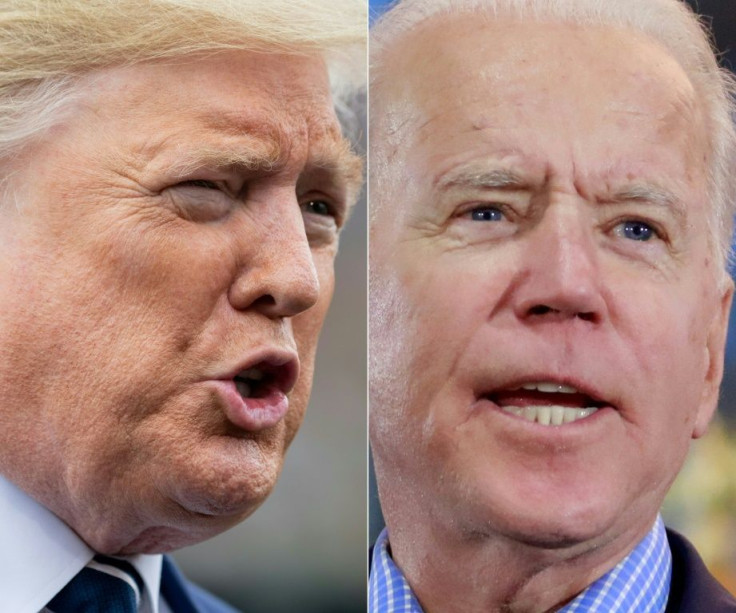Political Conventions Have Changed And Voters Are Tuning Out

KEY POINTS
- The Democratic convention drew more viewers than the Republican conclave but both audiences were down from 2016
- Democrats went totally virtual and got high marks for their technical presentation while Republicans still gathered in part in Charlotte, North Carolina
- Democrats painted a bleak future if Donald Trump is reelected while Republicans praised pre-COVID America
The four-day infomercials known as the Democratic and Republican national conventions fell short of their once-intended purpose, as grandiose, multimillion-dollar events. They came and went in August without providing any meaningful political boost to the two major political parties.
The coronavirus rewrote the political playbook in 2020, forcing Democrats to go entirely virtual, while canceling all events scheduled in Milwaukee. The Republicans decided to conduct some business in Charlotte, North Carolina, and thumbed their noses at pandemic guidelines.
Conventions previously had some drama and intrigue, but the days of awaiting the announcement of the nominee are long gone. As columnist Frank Rich noted: "The last convention when the presidential nomination was up for grabs was the Democrats’ in 1980, when Jimmy Carter and Teddy Kennedy were locked in battle. That means that essentially no one under the age of 55 even remembers what a consequential American political convention looks like."
A boost in the polls may also be a thing of the past. A Reuters/Ipsos poll taken right after the Democratic convention indicated that Joe Biden did not get the boost conventions traditionally have given candidates. Results are not yet available to determine whether President Trump has received a post-convention bump.
But one aspect appears quite clear: Americans were relatively disinterested.
Nearly 24.6 million Americans tuned in to hear Biden accept the Democratic nomination, down from the 29.8 million who tuned in to hear Hillary Clinton in 2016, Nielsen reported. The Republican audience was even smaller. Just 21.6 million tuned in to watch Trump, down from 32.2 million in 2016. The numbers do not include those who watch the events on streaming platforms.
So, what did the conventions accomplish?
Democrats warned a Trump victory would spell the end of democracy, built up Biden and running mate Kamala Harris as empathetic figures and showed Biden could execute a speech. Republicans painted over Trump’s rough edges in a bid to make those Republicans on the fence and independents more comfortable with supporting the incumbent while celebrating pre-COVID America.
Civil rights attorney Areva Martin told International Business Times that she thinks the Democrats managed to galvanize core voters despite the virtual nature of the convention while the Republican presentation was stale, failing to address the impact of the latest police shooting on professional sports and amplifying “the tone-deafness of the Republican party and Donald Trump on issues of race and systemic racism.”
“There were so many mistakes made with respect to the RNC presentation including the appearance of Trump each night in the staged presentation. The bigger problem is the constant stream of lies and misinformation reiterated by each of the speakers. The low viewership is evidence of the American people‘s lack of tolerance for the gaslighting that has been a hallmark of the Trump administration,” Martin said.
“Trump's nightly appearances were the glue that held together an otherwise shoddy Republican convention that was rife with unexciting speakers who attempted to retread the same campaign promises from four years ago,” Kevin Mercuri, CEO of Propheta Communications, told IBT.
Lindsey Evans, co-founder of Fresh Ethic Media, said it was a mistake for so many Trump family members to speak.
“While I don't mind hearing from one or two of Trump's family members, nine seemed a bit gratuitous. They missed out on a lot of fantastic Republican speakers and opted for people who just made the current president seem incompetent,” she said.
Both Martin and Mercuri said the litany of misstatements and false statements made during the Republican gathering failed to rewrite the reality of the coronavirus pandemic, the recession and the hobbling of the U.S. Postal Service.
At the same time, Mercuri said, the GOP “succeeded in highlighting all of the good and none of the bad. It was an effective way to energize the Republican base as we head into the homestretch. Meanwhile, the Democrats succeeded in showing that progressive politics can be fun and visually pleasing – they borrowed a lot from Bill Clinton and Barack Obama’s convention playbook in terms of star power, a sense of hope for the future and taking pride in one’s principles.”
Mark Hamrick, senior economic analyst at Bankrate, said the GOP convention failed to address Trump’s stewardship of the economy in the wake of the pandemic.
“There was little time spent by Trump describing a vision of economy-boosting policies during a second term,” Hamrick said in an email.
"Beyond the White House fence, in many ways the U.S. economy is like the tale of two proverbial cities at either end of the financial spectrum. On the high end, the stock market has hit record highs as investors piled into large technology companies while home sales and mortgage refinancing have benefited from low interest rates. At the other end of the spectrum, we have experienced the worst unemployment of our lifetimes.”
© Copyright IBTimes 2025. All rights reserved.






















